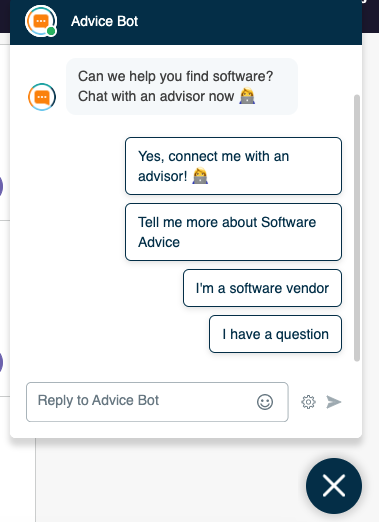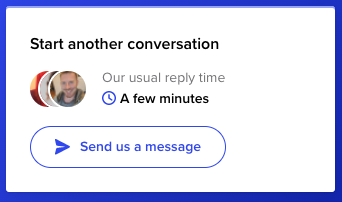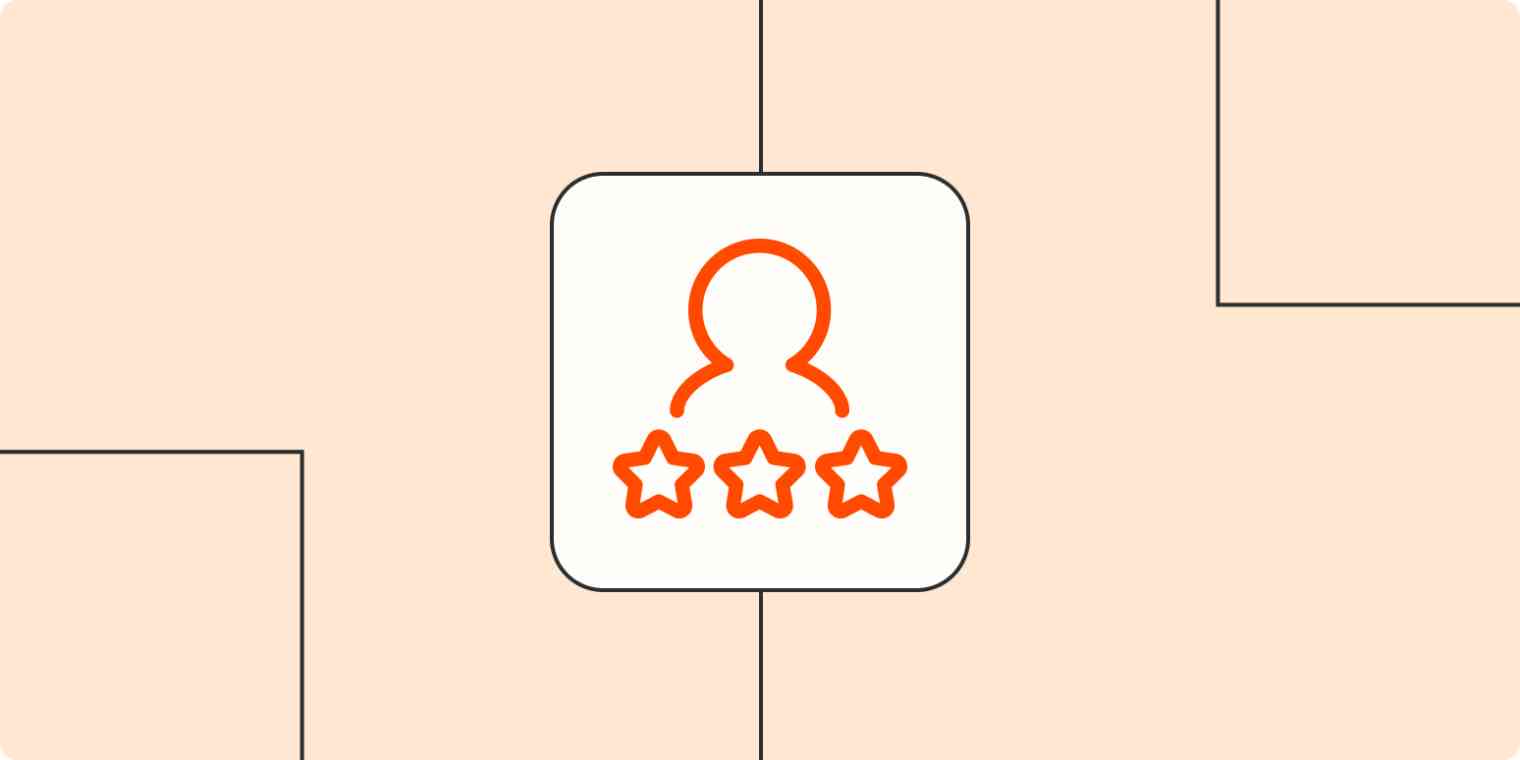Customers expect a lot more from businesses now than they did even just a few years ago. They want to be able to reach you ASAP, but they don't really want to talk to you, and they want you to know what their challenges are without actually having to explain them to you. No pressure, right?
As customer relationships get more complex, technology evolves to support them—and that's how customer engagement software came about.
All the support teams I've worked with have had a customer engagement platform (CEP) at the core of absolutely everything they do. In fact, CEPs have been so integral to how these businesses operate that I don't know how a support team serves customers without them. But let's start with the basics.
What is a customer engagement platform?
A customer engagement platform is a help desk, CRM, and communication platform all rolled into one. With that in mind, there are three main reasons you'd want to bring a CEP into your business:
To centralize and manage all your customer interactions in one place.
To communicate quickly with customers across multiple channels from one platform.
To analyze and learn from customer behavior, so you can improve your overall customer experience.
A CEP that covers all those bases will do great things for your customer satisfaction, engagement, and retention—and as a result, it should improve your bottom line. So let's walk through some of the main features you can expect to find in customer engagement tools.
1. Database segmentation
Customer engagement platforms allow you to segment your customer database in a really advanced way. You're constantly gathering so much information on customers through the platform every day, and your CEP lets you put that info to good use. For example, you might segment based on:
User persona. For example, their job title and why they're using your product.
User demographics. Things like company size, industry, and location.
User journey. What stage are they at in the user journey? Are they a sales lead, a new customer, or even an existing one?
User behavior. How are they currently using (or not using) your product? How are they engaging (or not engaging) with your marketing?
With this sort of advanced segmentation, you're able to identify trends and act on them. It also means you can hyper-personalize your customer communications—but more on that in a bit.
2. Knowledge base
When I have a support query, the last thing I want to do is have a full conversation with someone from support—and I definitely don't want to wait around for it. Like most people who live their lives on the internet, I'd rather find the answers myself.
Most customer engagement platforms provide a space for you to build up your own knowledge base of help articles that customers can proactively use to find the answers they need without having to ask your support team.

All customers have to do is enter a longtail keyword about their challenge into the search bar, and the system will pull up all relevant articles from the knowledge base. Easy.
3. Live and AI chat support
If a customer does reach out, they'll want to be able to do it in real-time. This is why live chat is pretty standard for support teams.
But the real game-changer is that CEPs are able to offer a mix of human and chatbot support. Offering this mix can massively speed up response times—and more often than not, customers can't even tell the difference. Or at least they don't care, as long as their question gets answered.
An AI-enabled CEP with live chat and bot functionality helps filter out customers who can find the answers they need in the knowledge base rather than speaking to support (the bot just sends them to the right place). It also helps speed up the process of getting to the core of the customer's problem before they reach a member of the support team (if the query is too complex for the chatbot to handle).
Take a look at the bot below. Based on the option a customer chooses, they'll move through a different workflow. And if necessary, it'll automatically raise a support ticket directly in the chat window (without customers realizing they're logging a ticket!).

You can use Zapier's pre-built request portal template, which enables your clients to seamlessly navigate and interact with different resources so that they can get the answers they're looking for. Offer a centralized hub where your customers can quickly create a support ticket, book a demo, read through FAQs, or get up to speed on the latest company news.
4. Ticketing workflows
Support ticketing tends to be the core part of any customer support platform. This is where your support team gets down to solving the more complex support queries, and having an inefficient ticketing system pretty much guarantees you'll be hemorrhaging customers.
But what's different about CEP ticketing systems is that customers can raise a support ticket without realizing they're actually doing it: in a conversation window inside your product, on your website, or even through a messaging app like Facebook Messenger.

Ticket numbers are assigned behind the scenes, so the customer doesn't even need to take note of it, and queries are tagged, managed, and prioritized in an inbox shared across multiple teams.
This means if the customer is passed on to different support team members or departments, all they'll notice is maybe that the profile image will switch to someone new. It won't disturb the conversation flow, and customers won't have to repeat their queries. The support team has all the info they need to carry on the conversation from where it left off—and some customers won't even notice the switch.
I recently had an experience where I had to type out an account payment issue I was having four times in live chat with a design software company because I kept getting passed on to different departments, and I lost my mind. It was a stark reminder of how important customer communications software is.
5. Personalized marketing
CEPs store every single touchpoint a customer has with your company, including the emails they engage with most, the products they buy, the events they attend, and the web pages they read. It borders on creepy, but it's necessary to give your customers the experience they expect.
By tracking this data, you're able to send hyper-personalized marketing that directly relates to challenges customers are having or engage with them on topics you can see from their past activity that they're most interested in. For example, I registered for an online event a few months ago, and when I recently went back to the company website, I saw this banner appear at the top of the screen.

Likewise, you can send push notifications to alert customers about feature improvements based on the areas of your product you know they use the most. CEPs are all about using data to give customers more of what they actually want.
CEPs also have advanced message-testing capabilities that allow you to try out different communication methods with your customers. In the same way that you would A/B test with email marketing, you can literally A/B test your messaging all across the system. By trying out different message versioning, you learn invaluable information about how, where, and when different types of customers like to be spoken to.
6. Feedback and reporting
Feedback data is a huge part of how CEPs work. How do you really know if you're providing good service if you don't ask?
The CEPs I've used all have easy, one-click ratings everywhere on the system. It's usually a simple happy/sad system that appears after each interaction and also at the bottom of support guides in your knowledge base.

When I worked in marketing, it was our job to keep an eye on the support guides by filtering them on the reports dashboard so the least satisfactory ones rose to the top. This would tell us which articles weren't clear enough or didn't provide the information customers needed to solve their challenges, so we could focus on improving them.
A simple feedback system like this involves such minimal effort from the customer that they actually do provide feedback. I speak from experience!
7. Seamless third-party integrations
For a customer engagement platform to do its job, you need it to integrate seamlessly with your current tech stack. That way, the flow of information in and out of your CEP is automatic, and you know nothing will slip through the cracks.
I once worked with a company that had a marketing CRM that didn't integrate fully with the CEP they were using. This meant that any new customer data that was added to the CEP had to be manually uploaded as a spreadsheet to update the contacts in the marketing CRM. The upload often resulted in errors, where existing customers would get sales emails, or the information on the customer record didn't match up with the record on the CEP. Not to mention the whole process was a huge waste of time.
Most CEPs are designed to integrate deeply with other tools. Any mature CEP will have strong native integrations, and for anything it doesn't integrate with natively, you can use Zapier to connect it to thousands of other tools.
Zapier is a no-code automation tool that lets you connect your apps into automated workflows, so that every person and every business can move forward at growth speed. Learn more about how it works.
Examples of customer engagement platforms
If you were to fire "customer engagement platforms" into Google right now, one thing you'd notice is that there are a lot of these platforms out there—and each one has a different angle. While all solid CEPs cover most of the features listed above, each app tends to lean in a bit more heavily on providing one aspect of the service than others.
Some examples:
Platforms like Intercom and HelpCrunch focus more on live chat and conversational marketing.
Zendesk is known for its ticketing service and self-help community.
If your customers are super active on social, Kustomer might be your best bet since the software is now part of Meta (Facebook).
If you're a smaller business looking to use customer insights to boost growth, you might take a look at Olark or ChurnZero.
All of these customer engagement tools will handle the basics, so it's just a matter of deciding what's most important to you and choosing the software that focuses most heavily in that area. If that's where its strengths lie, you're likely to see even more technical developments and new feature releases in the software over time—which is exactly what you want.




